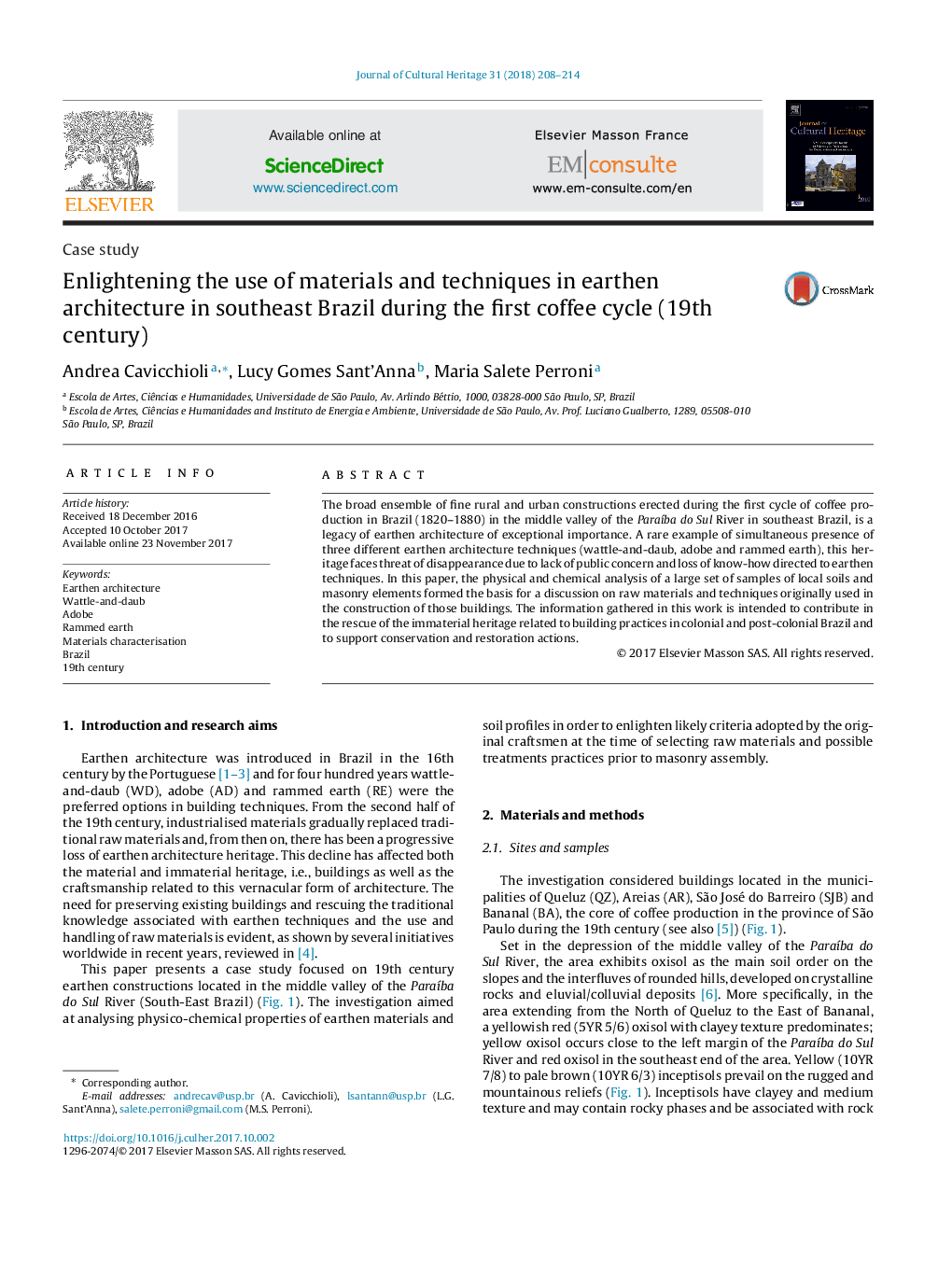| Article ID | Journal | Published Year | Pages | File Type |
|---|---|---|---|---|
| 7446212 | Journal of Cultural Heritage | 2018 | 7 Pages |
Abstract
The broad ensemble of fine rural and urban constructions erected during the first cycle of coffee production in Brazil (1820-1880) in the middle valley of the ParaÃba do Sul River in southeast Brazil, is a legacy of earthen architecture of exceptional importance. A rare example of simultaneous presence of three different earthen architecture techniques (wattle-and-daub, adobe and rammed earth), this heritage faces threat of disappearance due to lack of public concern and loss of know-how directed to earthen techniques. In this paper, the physical and chemical analysis of a large set of samples of local soils and masonry elements formed the basis for a discussion on raw materials and techniques originally used in the construction of those buildings. The information gathered in this work is intended to contribute in the rescue of the immaterial heritage related to building practices in colonial and post-colonial Brazil and to support conservation and restoration actions.
Related Topics
Physical Sciences and Engineering
Chemistry
Physical and Theoretical Chemistry
Authors
Andrea Cavicchioli, Lucy Gomes Sant'Anna, Maria Salete Perroni,
